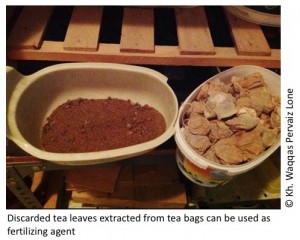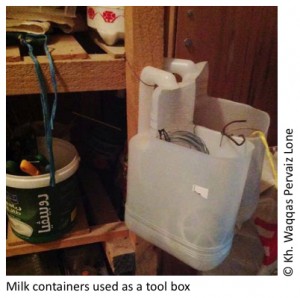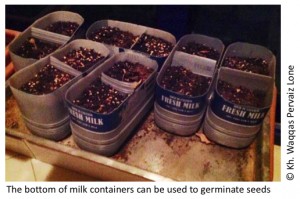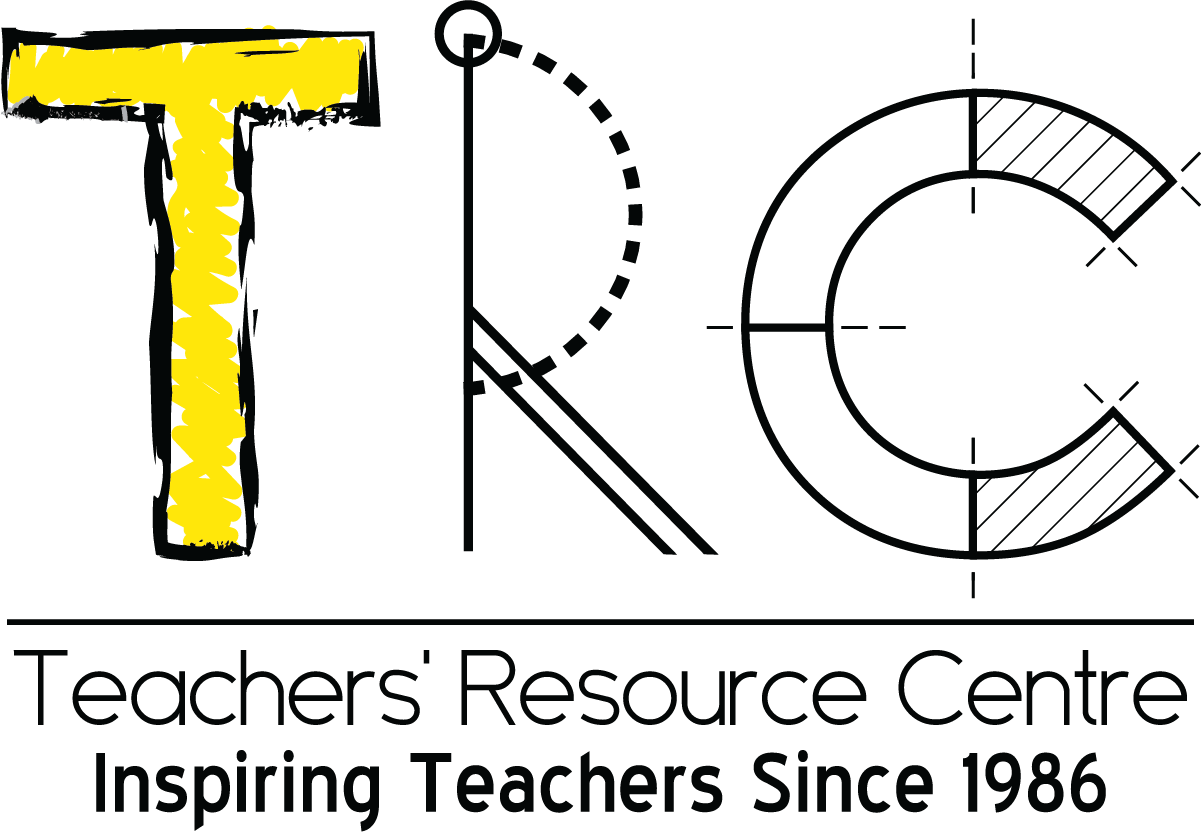No products in the cart.
Discovering nature inside an urban classroom
When teachers give children a chance to explore nature in the classroom, they ensure that what the student learns is permanent. In this article, Sana Lone shares classroom activities and projects that are easy-to-do and will encourage you and your students to adopt a greener lifestyle.
Living in one of the biggest and busiest cities in Pakistan, whenever I look around me I see a concrete jungle. With increased urbanisation we see less and less of Mother Nature around us. We are so busy in our daily lives that many of us are not able to take out time from our chaotic lives, and see the inevitable loss that threatens us if we don’t do anything about the nature versus urbanisation balance.
It is not just grownups that are losing touch with nature. At the risk of generalising, I feel that our children are way busier than they need to be. From school to tuition centres to unlimited time on gaming consoles and other electronic media devices, our children see less and less of nature.
Nature all around
The benefits of being in and around nature are endless. Green spaces improve the environment by keeping the air clean, by reducing temperatures, by keeping out pollutants from water sources and by retaining rainwater. Spending time in green spaces is also a way to reduce stress. Also when we spend time outdoors in the sun, we absorb vitamin D, which is essential for strong bones.
Those who spend a lot of time in natural environments are more likely to be aware of the lack of greenery and the level of pollution in urban areas. And any person who is aware of the environment is more likely to take measures to preserve it. When one is close to nature and thinking about it, one is able to come up with solutions that help utilise resources and use them to preserve nature, instead of adding to garbage heaps. For example, instead of  throwing away twigs and leaves that have fallen off your plants, collect them in a box or pot along with some soil and you can make organic compost. From tea leaves to egg shells to fruit peels you can use almost any organic material as fertiliser and crop boosters.
throwing away twigs and leaves that have fallen off your plants, collect them in a box or pot along with some soil and you can make organic compost. From tea leaves to egg shells to fruit peels you can use almost any organic material as fertiliser and crop boosters.
When you start hoarding what would otherwise be considered garbage for the preservation of nature, your eyes will open up to other aspects of conservation too. For example, one of my cousins figured out that she could collect the condensation water from air conditioners and use it to water her plants.
Promoting environmental conservation and preservation
Environmental conservation is not just limited to plants. You can conserve resources by recycling material, by  avoiding waste and the unnecessary use of resources. TRC has always promoted eco-friendly practices and there is an emphasis on using recycled material as teaching material and props. Students and staff have always been encouraged to save paper by avoiding unnecessary printouts. Also during the ECE-CP (Early Childhood Education Certificate Programme) the idea of utilising resources to the max, was incorporated through routine, practice, teaching and role modelling. (Read Ilm o Amal: Greening the Classroom, for the problems facing our planet and more eco-friendly practices that can be adopted in the classroom: http://trconline.org/greening-the-classroom/)
avoiding waste and the unnecessary use of resources. TRC has always promoted eco-friendly practices and there is an emphasis on using recycled material as teaching material and props. Students and staff have always been encouraged to save paper by avoiding unnecessary printouts. Also during the ECE-CP (Early Childhood Education Certificate Programme) the idea of utilising resources to the max, was incorporated through routine, practice, teaching and role modelling. (Read Ilm o Amal: Greening the Classroom, for the problems facing our planet and more eco-friendly practices that can be adopted in the classroom: http://trconline.org/greening-the-classroom/)
Teaching environmental studies
Teaching Environmental Studies is not just the job of the Geography and Science teacher. The idea can be incorporated in multiple subjects such as Art and Literature. Many classic poems, novels and other literary works feature the theme of nature, which can become a part of the curriculum. Creative writing sessions can be conducted where students are given a chance to explore nature around them and use it as an inspiration for their writing. William Wordsworth’s (who is considered the ‘Poet of Nature’) ‘Daffodils’, Robert Frost’s poem ‘Stopping by Woods on a Snowy Evening’ and Thomas Hardy’s classic novel ‘Far from the Madding Crowd’ all touch upon the subject of nature.
The environment plays an important role in the arts, as artists take inspiration from their surroundings. Teachers can have sessions where children gather art material from their surroundings to use in their art projects, such as:
• Various coloured flowers and leaves to make organic paints, potpourri and stencils
• Pencil shavings, old paper and straws to use in different collages
• Different-sized stones to paint and create various structures
Incorporating nature into the curriculum
The first and foremost challenge schools face while incorporating nature in the curriculum is the amount of space required for it. Not many schools have the space needed to accommodate a good botanical garden. Alongside the space issue is the issue of expertise and planning. Teachers are not specifically trained to plan concepts and develop curriculum goals related to natural spaces.
Another hindrance is the idea that anything related to plants should be a part of the science curriculum. The idea of an integrated nature-based curriculum is relatively unheard of for a lot of teachers and generally the average curriculum has very few topics related to the environment.
Bringing nature into the classroom
Using natural resources:
• Have an outdoor activity where children place paper on the barks of different trees and trace with pencils. Children then bring their tracings to the classroom and compare different bark patterns along with the names of the trees.
• Collect various insects in an aired jar and let children observe their body parts and then set them free.
• Have a seed germination activity in class. Use a glass jar, wet cotton and a chickpea or bean and let children observe the growth of the seed every day.
• Teachers can use various plant clippings in many different ways. They can use a leaf as a stamp for art projects and in a Science class they can observe its parts. Twigs can be used to create collage works. Large leaves can be cut in strips and used to teach children weaving, but don’t take off too many leaves from any plant. Use leaves that have fallen off instead.
Cross-curriculum nature projects:
• Create recycled paper in Environmental Studies and use it in various art projects. Have children use the recycled paper to create short storybooks. Ask children to write a poem on the recycled paper about the origins of the paper.
• Have an Aquarium Day in class and let children explore the parts of the body of a fish. Use the same fish in Language class by asking children to create a story around a fish using its body parts as keywords. In Art class, ask children to create a collage of a fish by using the information they received in their science class.
Grow plants in class:

• As mentioned above, the germination activity can be started in class and children can later take the jars home and let the plant grow some more in a small pot.
• Various herbs such as, coriander, fennel, basil, and bay can be sown in small trays filled with a mixture of soil and compost and can be set on a window sill or in an area of the classroom where the seeds can receive some sunlight. Children can later take these trays home and place them in a sunny area of their homes.
• Garlic greens and spring onions need very little space and can be utilised over and over again. Sow a garlic clove and a small onion in a pot and observe the green stems sprout. These green stems are edible and continue to grow even if you trim them regularly.
• Bean sprouts can be grown in small trays. Children can set the beans on a cloth-lined tray and spray them with water. With regular misting the beans will sprout. This is an easy-to-do activity for spaces without sunlight.
These activities can be used to teach children that there is nothing better than fresh organic food. It not only tastes better, it is also good for your health. By growing your own food you make sure that it is free of any harmful pesticides and the residue of artificial fertiliser. Those who grow their own food put their heart and soul into it and create a deep bond with nature. Only when one connects with nature, does one appreciate its bounty, importance and beauty and cultivates a profound respect for it.
Nature and active learning:
TRC has always focused on the importance of active learning and how such learning is permanent and efficient. By giving children a chance to explore nature in the classroom and giving them hands-on experiences, teachers can ensure that children’s learning is long lasting. It cultivates the idea of exploration and experience in children, rather than studying everything theoretically from a book.
By making classrooms ‘green’ teachers can achieve many educational goals. Teachers are able to create respect for nature (i.e. children learn not to break flowers and plants, not to waste food, take care of nature) in children, while giving them hands-on experience of it. Children learn to preserve nature rather than destroy it. Conservation is another aspect that a teacher can familiarise children with, by introducing the idea of recycling in the curriculum. Making your curriculum environment friendly ensures that you are promoting and instilling eco-friendly practices in children and helping the Earth become greener.
Sana Lone is an IECE graduate (2010-2011). She has a Master’s degree in English Literature. She taught for 2 years and is taking a break from teaching. Currently Sana has been writing articles and blogs on education and is also managing a social media page for teachers and parents.
References:
http://artfulparent.com/2014/05/kids-art-with-rocks.html
http://projectevergreen.org/resources/environmental-benefits-of-green-space/
http://www.organicgardening.com/
http://greatist.com/health/best-plants-to-grow-indoors
Looking for more ways to get the message of environmental conservation across to your students?
For effective and interesting ways to incorporate environmental education in the classroom get a copy of TRC’s Earth Day book. Catering to all ages and covering a range of environment-related topics, our Earth Day book is filled with effective and low-cost classroom activities for your students.
For more information and purchase details, click on the link and scroll down: http://trconline.org/category/trc-products/
August 2014

